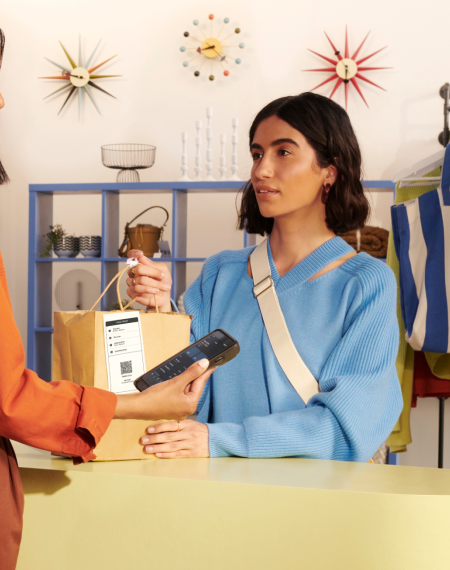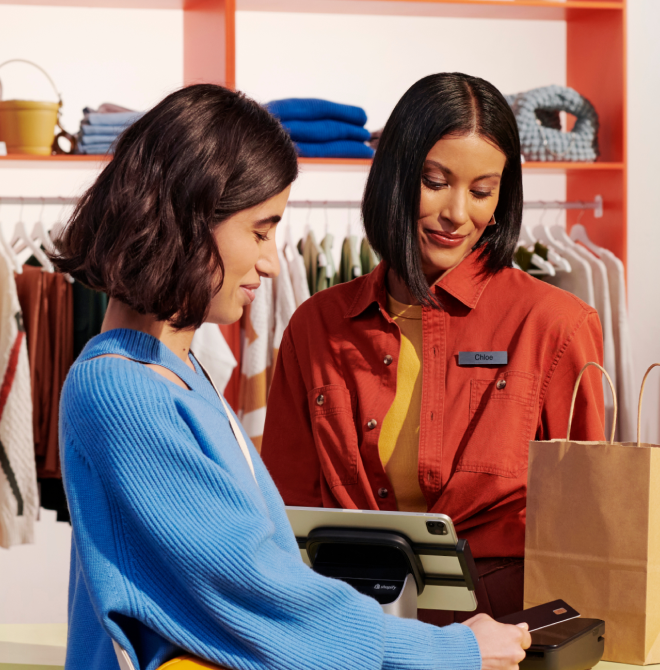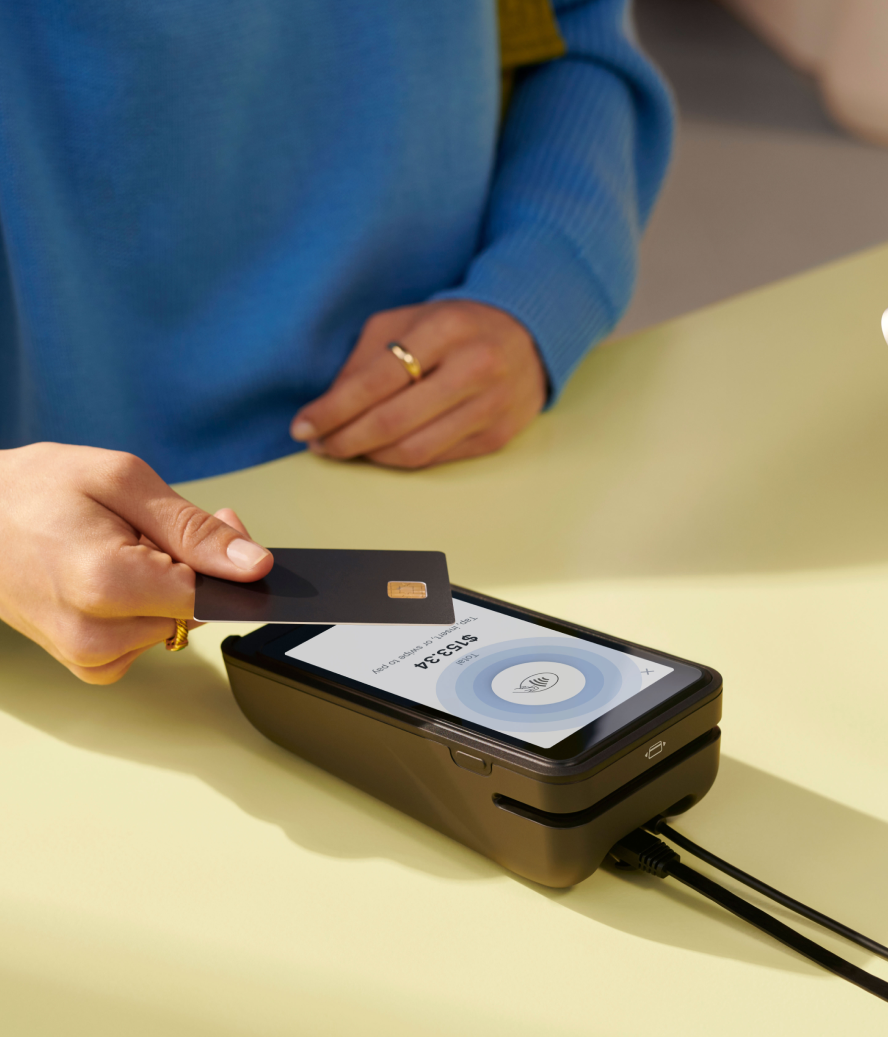Every day, we play a part in wholesale and retail business models. Despite that, it’s easy to confuse the two. How do they work? What’s the best ecommerce business model for you? And can you blend the two to get the best of both worlds?
Knowing the difference between wholesale and retail is essential to succeed in commerce.
Ahead, you’ll learn everything you need to know about the two. We’ll compare retail vs. wholesale, share the key differences, and guide you on finding the right blend for your business.
What’s the difference between wholesale and retail?
Wholesale involves selling products to other businesses at discounted prices and in bulk. Retail involves selling products directly to consumers at a retail price.
Another way of explaining the difference between wholesale and retail is by using the business terms “business-to-business” (B2B) and “business-to-consumer” (B2C).
- Wholesalers are B2B because they sell to other businesses.
- Retailers are B2C because they sell to individual consumers.
How wholesale works
Wholesaling is buying large quantities of goods from manufacturers or distributors, storing them in warehouses, and then reselling them to retailers for a profit.
Wholesalers purchase enormous amounts of inventory at a time for a low price and then sell the products in smaller quantities at a higher price. For example, a wholesaler might buy 1,000 water bottles from this manufacturer for $2 per bottle. This would cost them $2,000.
The wholesaler could then sell 50 water bottles to 20 different retailers for $6 per bottle—three times the price they originally bought each bottle for. Once they deducted their expenses, such as warehousing and delivery, they’d be left with a profit.
All in all, wholesalers:
- Buy products from manufacturers and distributors in bulk at a low cost.
- Don’t sell directly to the end user of the product.
- Resell these products to other businesses in smaller quantities and at a higher cost than they bought them for.
How retail works
A retailer buys goods in bulk from a wholesaler, manufacturer, or distributor and sells them to end users. They are the last business in the supply chain.
So whenever you buy something for your use as a consumer, you buy from a retailer. This includes the grocery store, hardware store, and clothes shop. What’s more, retailers usually sell products individually.
For example, a retailer might purchase 100 watches from a wholesaler for $20 each and sell them to consumers for $55 each.
Simply put, retailers:
- Buy goods in bulk from a wholesaler or distributor.
- Market and sell products individually to the end user.
- Have complete control over the customer experience.
Comparison: wholesale vs. retail
| Difference | Wholesale | Retail |
|---|---|---|
| Target audience | Businesses | Consumers |
| Purchasing process | Long and involves multiple stakeholders | Short and involving one or two decision-makers |
| Pricing | Lower cost per unit: around 15% to 30% profit margins | Higher cost per unit: around 30–50% profit on the wholesale price |
| Transaction volume | Regular bulk orders | Singular products |
| Inventory storage | Large warehouses that focus on safety and bulk loading/unloading | Retail stockrooms and in-store shelving units |
| Product range | Fewer products in larger quantities | More products in lower quantities |
| Operating costs | Logistics and fulfillment | All aspects of ecommerce: shipping and fulfillment, customer service, marketing, etc. |
| Fulfillment and shipping | Higher shipping fees due to large box sizes | Fast and affordable shipping |
| Location | Near transportation links (e.g. airports and highways) | High streets and shopping malls |
| Payment terms | Invoice billing and credit verification | Immediate checkout |
Target audience
Wholesale customers buy products on behalf of the business, usually to resell in their store at a higher markup. The target audience of a wholesale business tends to be very similar. They might be merchandising, buying, or store manager. Their goal is to turn a profit by reselling the inventory they buy.
Retail brands, however, sell to the end customer. Their challenges and purchase motivations can vary dramatically, especially if a product has multiple use cases.
We can see this in action with two brands that sell skincare products. The wholesale customer wants to secure high-quality products that they can turn a profit on, whereas the retail customer wants to minimize their acne and improve their skin’s hydration.
Purchasing process
The wholesale purchase process is more formal. Transactions involve contracts, ongoing negotiations, and purchase orders. Given the high volume and value of goods exchanged, there’s more emphasis on setting clear terms, prices, delivery schedules, and payment conditions. The average B2B purchase decision involves eight stakeholders.
Retail purchases are more straightforward. Customers, whether shopping online or in a retail store, choose what they want and pay for it. There’s usually just one decision maker (two if they’re sharing the item with someone). The focus is on speed and convenience, which can mean paying with a preferred method like Shop Pay.
Pricing and profit margins
Wholesale and retail businesses both make money by buying products at one price and selling them for more. This is called “markup.”
Markups are added to cost prices to pay for expenses and make a profit. Each step in the commerce supply chain increases the cost of goods. This is what’s known as a “keystone markup.” It’s when products get marked up by 50%. This means the product is twice as expensive as when it was bought.
Many businesses use this strategy as a baseline for wholesale and retail pricing strategies, although there’s no hard and fast rule. Generally speaking:
- Wholesalers have 15-30% profit margins
- Retailers add a 30-50% markup on the wholesale price
Transaction volume
Wholesalers handle large quantities of products in fewer deals, each worth a significant sum. They specialize in managing logistics, warehousing, and storage efficiently for fewer recurring customers. It can be challenging to lose a major client because of the high value of each transaction.
Retailers, on the other hand, specialize in smaller, more individualized transactions. While the value per transaction is lower, the cumulative value is significant. Rapid inventory turnover and seamless customer experience require efficient inventory management and point-of-sale (POS) systems. With such a broad customer base, any disruption in their supply chain could affect many individual sales.
💡Pro tip: Unify your inventory data—whether you’re selling wholesale or retail—with Shopify’s commerce operating platform. Get one source of truth for all of your data, so you can prevent stockouts and make smarter business decisions.
Inventory storage and warehousing
Most wholesalers have huge warehouses that store a lot of inventory. The facilities prioritize efficient storage, easy bulk loading and unloading, and an optimized logistics flow. The emphasis is less on aesthetics and more on functionality, safety, and volume management.
For retailers, storage is split between back rooms and storerooms. Although smaller than wholesale warehouses, stockrooms are designed to replenish stock quickly on the shop floor. Shelf and rack storage on the shop floor focuses on presentation and accessibility.
Range of products
Wholesalers typically stock fewer products but in larger quantities. They focus on supplying bulk quantities of specific items to retailers or other businesses.
Retailers cater to the diverse preferences of consumers with a wider variety of products. Seasonal trends, customer feedback, and market research influence their stock.
Since they’re the final point in the consumer purchase journey, they need to offer a diverse range to meet individual preferences and needs. The result is often multiple brands, styles, colors, sizes, and flavors.
Operating costs
Wholesaling has fewer expenses to track and worry about. With large clients and most of their income coming from repeat business, they need to focus on warehousing, shipping, and fulfillment.
However, retailers need to focus most on marketing, branding, selling, and customer service. Both wholesale and retail businesses need to spend time managing things like inventory, cash flow, and staff.
Order fulfillment and shipping
Wholesale customers buy products in bulk, so you’ll need significant warehouse space to hold inventory if you sell B2B. This also presents shipping challenges. Many carriers calculate shipping fees based on dimension and weight. You might need to pass these fees to your wholesale customers to protect profit margins.
Retailers, however, ship items in much smaller quantities (perhaps one or two at a time). This makes shipping a smaller portion of your annual business expenses. You could incorporate shipping costs into product prices to offset free shipping incentives.
As for inventory storage: you don’t need as much space to hold inventory as a retailer, provided you’re balancing stock levels. Perhaps you only need to stock 500 units if you average 15 daily sales instead of 2,000 units to serve wholesale customers who buy thousands at once.
Location
Location is extremely important to wholesale and retail businesses for very different reasons.
Retailers need to be where consumers spend the most time, such as high streets and shopping malls. These locations are typically extremely expensive per square foot because of the demand.
Wholesaler needs are different. This business model requires significant storage space to store bulk goods. What’s more, shipping costs are one of the largest expenses wholesalers have. For this reason, it helps to be located next to a large intersection of highways, near an airport, or anywhere conducive to your shipping strategy.
Payment terms
Payment structures look different in wholesale and retail. Wholesalers tend to offer extended payment terms and invoice-based billing, while retailers focus on immediate transactions at checkout.
Some common approaches you’ll see as a wholesaler:
- Net 30, Net 60 invoice billing so businesses pay after delivery.
- Credit checks and trade references to reduce non-payment risk.
- Small discounts for early payments.
- Volume-based terms like better pricing or extended payment deadlines.
Retail approaches include:
- Customers pay at the time of purchase using credit cards or digital wallets.
- Buy now, pay later options for higher-priced items.
Shopify Payments is Shopify's own payment system that lets store owners accept B2B and B2C payment options directly on their stores, without having to set up a separate payment service.
Depending on where your business is located, customers can pay with major credit cards, digital wallets (like Apple Pay, Google Pay, Shop Pay), and payment methods popular in specific countries.
When is wholesale best?
You have strong relationship-building skills
Wholesale success depends heavily on building and maintaining strong business relationships. You'll work closely with a smaller number of clients, developing deep partnerships that can lead to consistent, long-term revenue. However, these relationships require careful nurturing and trust-building, as losing even one major client can significantly impact your business.
You prefer to make fewer, higher-value sales
The wholesale model focuses on larger transactions with established buyers rather than numerous small sales. This means less time spent on constant customer acquisition and more time optimizing operations and fulfillment. However, each sale requires careful attention to detail—from overseeing warehouse inventory, managing client orders, and distributing wholesale products—as mistakes can be costly at this scale.
Pro tip: Shopify’s B2B functionality encourages retention with personalized accounts unique to each wholesale customer. Let buyers view past purchases, save their credit cards, and easily reorder new inventory without the hassle of speaking with a salesperson first.
“Customers used to be so frustrated by our platform that they’d rather call us on the phone to place orders,” said Nicholas Lachhman, associate ecommerce director at Dermalogica Canada. “Now we’re seeing customers be so comfortable with the experience that they’re placing orders for thousands of dollars worth of product from their mobile phones.”
You want more security
Long-term relationships and repeat orders help to create a sense of security for the business, offering predictability in sales and revenue.
You’ll still need to spread your eggs across multiple baskets. A sour relationship with one client, or one that goes out of business, could mean losing substantial revenue overnight.
When is retail best?
You’re great at marketing
Retail success demands strong marketing and customer engagement skills. You'll need to consistently attract new customers while keeping existing ones coming back. This model rewards creativity in promotion, merchandising, and customer experience. The ability to tell compelling brand stories and create engaging shopping experiences is crucial for standing out in a competitive market.
This gives you lots of creative freedom to experiment with marketing campaigns that engage your target market and drive foot traffic. Selling products individually also offers upselling, cross-selling, and bundling opportunities to maximize revenue.
You want more control
Retail gives you direct control over how customers experience your brand. From product presentation to pricing strategy, you make all the decisions about how to position and sell your products. This control extends to customer service, store environment, and marketing messages, allowing you to build and maintain a consistent brand identity.
This applies to where your products are sold. With a robust POS system like Shopify POS, retailers can complete transactions across multiple channels—in-person, over the phone, or online—from one platform. This unified approach means your inventory, customer data, and transactions sync automatically across channels, giving you and your customers a consistent experience no matter how they choose to shop.
You want higher profit margins
Wholesalers make less of a profit per unit because they rely on economies of scale. If you’re able to scale a retail business to sell the same quantities as a wholesaler, you’ll benefit from higher profit margins.
Can you do both wholesale and retail?
Plenty of larger businesses don’t just stick to wholesale or retail. Many companies take part in every single aspect of the commerce supply chain.
Three examples of companies that do it all are Nike, Cartier, and Brooklinen. These businesses design, manufacture, distribute, wholesale, and retail their own products.
Brooklinen, for example, started as a direct-to-consumer (DTC) brand selling bed linens online. Over the years, it’s expanded into wholesale operations and now sells products to hospitality businesses. Using B2B on Shopify, the branded created a seamless experience where wholesale buyers can place bulk orders online, similar to its retail customers. This has allowed them to do both wholesale and retail from one unified backend and earn more sales.
Sell through retail and wholesale on Shopify today
It’s clear selling wholesale is a lucrative opportunity for any online retailer. With wholesalers focusing on volume, efficiency, and strong customer relationships, it can be a great sales channel for growing and established ecommerce brands.
Shopify streamlines B2B sales with tools for managing inventory, processing bulk orders, and maintaining relationships with customers. You can make a password-protected wholesale page on your ecommerce site and sell directly to other businesses. Or, you can sell in bulk online through the wholesale marketplace Faire to reach a wider audience.
That’s not to say you need to forgo retail sales entirely. Shopify lets you conduct B2B sales on the same unified platform that powers your DTC storefront. One login, one inventory system, and one customer profile give you a 360-degree view of your audience—no matter who they are or how they buy.
“For a high consideration proposition like The Conran Shop, it [unified commerce] enables customers to be much more seamless in the way they move between the online and in-store experience, whereas before it was totally separated,” said Richard Voyce, digital director at The Conran Shop—a brand that migrated to Shopify and saw a 54% increase in conversion rates while halving total cost of ownership.
Wholesale versus retail FAQ
What's the best way to start adding wholesale to my retail business?
You can start by creating a password-protected wholesale channel on your existing online store or by joining established wholesale marketplaces. With platforms like Shopify, both options let you maintain your retail presence while expanding into wholesale with minimal technical setup.
How do I handle different pricing for wholesale and retail?
Modern commerce platforms allow you to create custom price lists for different customer groups. For example, with Shopify, you can set wholesale prices that are only visible to logged-in wholesale customers, while retail customers see regular pricing. This helps maintain price consistency across channels.
Can I measure wholesale and retail performance separately?
Yes, most commerce platforms provide tools to analyze wholesale and retail performance independently. Look for a solution that lets you track key metrics like average order value, customer acquisition costs, and profit margins across both business models. Shopify's reporting tools, for instance, offer this level of detailed analysis.
Is it better to buy wholesale or retail?
Buying wholesale offers products at a lower cost per unit due to bulk purchasing. It’s better for businesses or individuals requiring large quantities. Buying retail provides the flexibility of purchasing in smaller quantities and often has a wider selection of products, but typically comes at a higher per-unit cost.
Is Walmart a retailer or wholesaler?
Walmart is primarily a retailer, offering a vast array of products directly to end consumers in its numerous stores. While Walmart has wholesale-like prices for many items, it does not operate in the wholesale business model.
Is it better to be a retailer or wholesaler?
Both retail and wholesale have their pros and cons. Retail tends to be best if you want control over the customer experience, marketing freedom, and higher profits. Consider wholesale if security, relationship building, and bulk orders are more of a priority.
What is the difference between wholesale and retail prices?
Wholesale prices have a 15-30% profit margin, which adds up when you’re selling in bulk. The recommended retail price is around 2.5x this figure.
What is the margin between wholesale and retail?
Wholesalers typically turn a 15% to 30% profit when they sell items to other businesses. This figure is higher for retailers who sell directly to customers—around 20% to 50% of the wholesale price.





